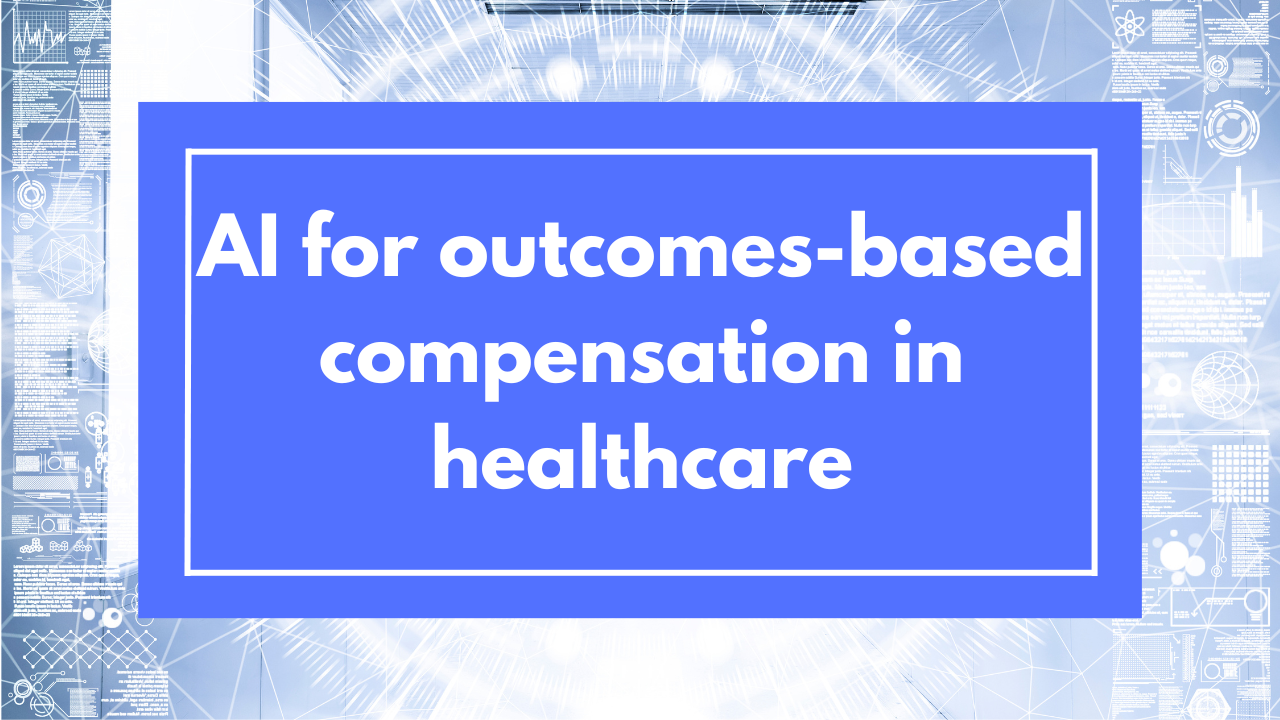What is outcomes-based compensation in healthcare?
Compensation plans in the healthcare industry have undergone a paradigm shift, with more providers moving away from volume-based to outcome-based compensation for their employees. This is partly attributable to the rising healthcare costs and enhanced patient empowerment, with a growing need for better quality of service delivery (Zigrang, 2022). Volume-based models compensate providers for the quantity of care delivered rather than the impact on the health status of patients (Tai et al, 2014). The vision for outcomes-based compensation in healthcare revolves around incentivizing and rewarding healthcare providers based on the outcomes they achieve in patient care rather than just on the volume of services delivered. This approach aims to improve the overall quality of care, enhance patient outcomes, and reduce healthcare costs. However, existing literature on outcomes-based compensation models shows mixed results in terms of impacts on quality of care and costs, with some reporting significant cost savings and others reporting increased costs of care, as expounded later on in this chapter.
In an outcomes-based compensation model in healthcare, providers are encouraged to focus on delivering measurable results and positive patient experiences. This may involve achieving specific health outcomes, such as reducing hospital readmission rates, improving patient satisfaction scores, or effectively managing chronic conditions. By aligning compensation with outcomes, healthcare organizations aim to drive better patient outcomes, ensure patient safety, and enhance healthcare delivery.
Healthcare outcomes reflect the quality of care offered by practice and remain stable over time compared to process measures, which keep changing over time. For instance, the target outcomes in a diabetic care clinic include reduced blindness, reduced amputation rates, improved self-management and confidence, and reduced heart attacks. These target outcomes that matter to patients the most tend to remain stable over time regardless of where you practice. On the other hand, process measures such as fundoscopic examination, blood glucose assessment, foot care, and medication review may vary over time. This forms one of the basis for outcomes-based compensation models (Dunbar-Rees, 2018).
The outcomes-based compensation model offers several benefits to different players in the healthcare field. Patients get to enjoy quality care over volume, with the potential to address health inequalities. This is so because the model emphasizes outcomes that matter to patients, which tend to remain constant regardless of the geographical location. For instance, the target outcomes for a diabetic care clinic in Kisumu, Kenya, Africa, would be more or less the same as for a clinic in Atlanta, Georgia, USA. For the providers, outcomes-based compensation helps reduce the wastage of resources and unnecessary interventions by enabling efficient resource allocation. It also reduces fragmentation of care by encouraging collaboration and coordination across clinicians and specialties. The payers benefit through reduced wasted healthcare spend as well as focusing on buying healthcare that is based on outcomes that matter most to their beneficiaries (World Economic Forum, 2023).
The outcomes-based model has been implemented across different healthcare facilities worldwide in a bid to improve the quality of care and reduce costs. There are several studies showing the impact of outcomes-based models on the quality of care, resource utilization, and healthcare costs. These studies show varied outcomes, with some reporting positive impacts and others reporting negative impacts or no significant impacts. For instance, the Pioneer Accountable Care Organizations (ACO) implemented by the Center for Medicare and Medicaid Services in the USA as an outcome-based compensation model reported a reduction in healthcare costs by approximately $385M in two years compared to the previous volume-based compensation model, with no difference in quality of care (McCarthy, 2015). The Medicare Shared Savings Program, which was also designed to incentivize cost reduction, reported similar cost savings of $385M dollars over one year of implementation (Eijkenaar & Schut, 2015). However, some studies suggest that outcomes-based models were associated with additional healthcare costs, mainly in the form of bonuses and incentives paid out to healthcare workers. For instance, the Quality and Outcomes Framework (QOF) implemented in the UK as a pay-for-performance program was reported to have spent about US $9 billion on incentive payments over a period of just seven years (Ryan et al, 2016).
Outcomes-based compensation models impact on the quality of care delivered to patients, albeit to varying extents from the available literature. In one study, the Quality and Outcomes Framework model operationalized in the UK to incentivize family practitioners for target patient outcomes resulted in an increase in the median practices achieving the target HbA1C levels for diabetic patients from 59% to 66.7% in two years. (Vaghela et al, 2009). However, another study evaluating the impacts of the same Quality and Outcomes Framework in the UK on hypertension reported no significant change in blood pressure monitoring rates and treatment intensity attributable to the program. There was no significant difference in the cumulative incidence of stroke, renal failure, and heart failure as well (Serumaga et al, 2011). With such mixed data on the impacts of pay-for-performance on costs and outcomes, it is evident that this alone may not be sufficient to improve the quality of patient care, and more factors need to be accounted for in order to achieve optimal patient care quality.
Another study in rural Kenya evaluated the utility of outcomes-based compensation models in improving the management of suspected malarial fevers. The program rewarded measures of process quality of care, including the proportion of patients correctly given antimalarial drugs based on test results. Incentives were provided to facilities with increased rates of treatment for confirmed malaria cases, as well as those with reduced treatment rates without any confirmatory tests. From the study, the odds of receiving treatment following a negative malaria test in the intervention arm was 0.15 relative to baseline, compared to 0.42 in the comparison facilities that were not enrolled in the program. This translated to a 2.75 times greater reduction of inappropriate prescription of antimalarial drugs in the incentivized groups compared to the comparison groups (Menya et al, 2015). Another instance in which the outcomes-based model has been utilized is through Humana’s national oncology model of care that was launched across various practices in the USA. This model aimed at improving health outcomes for cancer patients by offering compensation based on certain outcome measures of improved quality(Humana, 2019).
Implementing outcomes-based compensation in healthcare requires using data-driven metrics and performance indicators to evaluate the effectiveness of care provided. This may involve tracking clinical outcomes, patient feedback, and healthcare utilization patterns. The compensation structure should be designed in a way that rewards healthcare providers who consistently achieve or exceed predefined benchmarks for quality, efficiency, and patient satisfaction.
It is important to note that implementing outcomes-based compensation in healthcare can be complex due to various factors that influence patient outcomes, including patient demographics, socioeconomic conditions, and co-morbidities. Additionally, measuring and attributing outcomes solely to individual healthcare providers can be challenging in team-based healthcare delivery settings, which is the case in most practices. Therefore, designing and implementing an effective outcomes-based compensation system requires careful consideration of these complexities, appropriate risk adjustments, and clear guidelines for performance evaluation.
Overall, the vision for outcomes-based compensation in healthcare is to create a system that incentivizes and rewards healthcare providers for delivering high-quality care, improving patient outcomes, and optimizing healthcare value for patients and the healthcare system. To implement such models, high-quality data metrics are paramount, and artificial intelligence is at the core of utilizing such data.
Can AI be relevant to outcomes-based compensation in healthcare?
In the era of rapid technological advancements, artificial intelligence (AI) is revolutionizing various industries, including healthcare. One area where AI holds immense potential is in transforming outcomes-based healthcare. By harnessing the power of AI, healthcare providers can make data-driven decisions, improve patient outcomes, and enhance the delivery of care. AI can be utilized in analyzing patient data, personalizing care and treatment, early disease diagnosis, and enhancing workflow efficiency. We shall explore in detail each of these ways in which AI is shaping outcomes-based healthcare and highlight some of the challenges.
Artificial intelligence can be utilized to analyze patient data and provide key insights that drive outcomes-based compensation. One of the key strengths of AI is its ability to analyze vast amounts of healthcare data quickly and accurately. AI algorithms can process and interpret complex medical data, including electronic health records, medical imaging reports, patient histories, and genetics data. Data obtained from AI-based electronic health records can be used to provide valuable insights and draw predictive models and trends at the population level that may help define target outcomes that may help drive compensation models. These insights allow healthcare professionals to tailor treatments, interventions, and preventive measures to individual patients, maximizing their chances of success.
AI can also be utilized in outcomes-based compensation models through the provision of personalized care and treatment, AI enables personalized healthcare by considering individual patient characteristics, medical histories, and genetic profiles. Machine learning algorithms can assess patient risk factors, predict disease progression, and recommend personalized treatment plans based on comprehensive data analysis. This facilitates precision medicine, ensuring that patients receive the most appropriate interventions for their specific conditions. From selecting the most effective medications to customizing rehabilitation plans, AI empowers healthcare providers to deliver personalized care that optimizes outcomes. AI-based technologies such as chatbots can help collect real-time data from patients and provide individualized feedback based on the inputs. Several mobile applications also exist that can help provide individualized treatment targets for patients such as those living with diabetes. These applications can help track their sugar control targets and enhance better outcomes.
AI can also aid in early disease detection and diagnosis. AI-powered algorithms excel in detecting anomalies and patterns in medical data, aiding in the early detection and diagnosis of diseases. By analyzing patient symptoms, medical images, and genetic markers, AI algorithms can flag potential risks and generate alerts for healthcare professionals. This enables healthcare providers to intervene early, leading to timely treatment, improved prognosis, and better patient outcomes. For example, AI systems for breast cancer detection from digital mammography have shown results comparable to experienced radiologists (Rodriguez-Ruiz et al., 2019). AI systems have also been developed to help in the early detection of brain diseases such as Alzheimer’s and Parkinson’s disease (Park and Moon, 2022). However, caution needs to be exercised and human verification should be employed to avoid false positive signals that may be distressful to patients.
Another way in which AI can be utilized in outcomes-based compensation models is through the enhancement of workflow efficiency. AI technologies streamline administrative tasks, enabling healthcare providers to focus more on patient care. Natural language processing capabilities can automate medical documentation, ensuring accurate and timely record-keeping. AI-powered chatbots and virtual assistants can provide patients with immediate access to relevant health information, schedule appointments, and address common queries, reducing the burden on healthcare staff. By automating routine tasks, healthcare professionals have more time to dedicate to complex patient cases, leading to improved outcomes and higher-quality care.
While AI has immense potential for outcomes-based healthcare, there are important challenges and considerations to address. Patent data privacy and security is a big concern since training AI models requires a large volume of patient data. Thus, patient data privacy and security must be protected through robust information governance frameworks. Ethical considerations regarding AI algorithms, such as bias and transparency, must be addressed to foster trust and accountability. Healthcare practices may need to employ human validation of the results generated by AI for accuracy and to avoid bias, especially in such critical areas of compensation. Additionally, potential resistance from healthcare providers, lack of interoperability among existing systems, and the need for regulatory frameworks are challenges that need attention to ensure a successful implementation of AI in outcomes-based healthcare. Healthcare practices need to evaluate the willingness of their employees to embrace and collaborate with the process improvements that come with AI technologies.
In conclusion, outcomes-based compensation models impact on the costs, quality, and utilization of healthcare to varying extents, with literature showing mixed outcomes in terms of benefits. Such mixed outcomes data indicate that outcomes-based compensation models alone are not the silver bullet to improving quality and costs of care, and other factors need to be considered. In the implementation process of outcomes-based models, AI takes center stage. By leveraging AI-powered analytics, personalized care and treatment, early disease detection, and enhanced workflow efficiency, healthcare providers can transform patient care and improve outcomes. However, it is crucial to address challenges and considerations, including privacy, ethics, and regulatory frameworks, to ensure responsible and effective implementation of AI in healthcare. As AI continues to evolve, it is poised to become an indispensable tool in driving positive patient outcomes and shaping the future of healthcare.
References
- Dunbar-Rees R. (2018). Paying for what matters most: the future of outcomes-based payments in healthcare. Future Healthc J.5(2):98-102.
- Eijkenaar, F., & Schut, E. (2015). Uitkomstbekostiging in de zorg: een (on) begaanbare weg?.
- Howard Rosen. (2023). Top Five Opportunities And Challenges Of AI In Healthcare. Forbes. https://www.forbes.com/sites/forbesbusinesscouncil/2023/02/07/top-five-opportunities-and-challenges-of-ai-in-healthcare/?sh=7a7c3a6c2805
- Humana. 2019. Humana launches oncology model of care program to improve the patient experience and health outcomes in cancer care. Online access link: https://press.humana.com/news/news-details/2019/launches-oncology-model-of-care-program/default.aspx#gsc.tab=0.
- McCarthy, M. (2015). “Value based” payment project saves US nearly $400 m in two years, report finds.
- Menya, D., Platt, A., Manji, I., Sang, E., Wafula, R., Ren, J., … & O’Meara, W. P. (2015). Using pay for performance incentives (P4P) to improve management of suspected malaria fevers in rural Kenya: a cluster randomized controlled trial. BMC medicine, 13(1), 1-13.
- Park JH, Moon J. (2022). Early Diagnosis of Brain Diseases Using Artificial Intelligence and EV Molecular Data: A Proposed Noninvasive Repeated Diagnosis Approach. Cells. 12(1):102.
- Rodriguez-Ruiz A, Lång K, Gubern-Merida A, Broeders M, Gennaro G, Clauser P, Helbich TH, et al. (2019). Stand-Alone Artificial Intelligence for Breast Cancer Detection in Mammography: Comparison With 101 Radiologists. J Natl Cancer Inst. 111(9):916-922.
- Ryan, A. M., Krinsky, S., Kontopantelis, E., & Doran, T. (2016). Long-term evidence for the effect of pay-for-performance in primary care on mortality in the UK: a population study. The Lancet, 388(10041), 268-274.
- Serumaga, B., Ross-Degnan, D., Avery, A. J., Elliott, R. A., Majumdar, S. R., Zhang, F., & Soumerai, S. B. (2011). Effect of pay for performance on the management and outcomes of hypertension in the United Kingdom: interrupted time series study. Bmj, 342.
- Tai, W., Kalanithi, L., & Milstein, A. (2014). What can be achieved by redesigning stroke care for a value-based world?. Expert Review of Pharmacoeconomics & Outcomes Research, 14(5), 585-587.
- Vaghela, P., Ashworth, M., Schofield, P., & Gulliford, M. C. (2009). Population intermediate outcomes of diabetes under pay-for-performance incentives in England from 2004 to 2008. Diabetes care, 32(3), 427-429.
- William Gramble. (2023). Using AI in the Era of Value-Based Care. AllazoHealth.
- World Economic Forum. (2023).The Moment of Truth for Healthcare Spending: How Payment Models can Transform Healthcare Systems. Insight Report. Link: www3.weforum.org/docs/WEF_The_Moment_of_Truth_for_Healthcare_Spending_2023.pdf
- Zigrang, T. A. (2022). Healthcare compensation plans: Current challenges and novel approaches. Frontiers of Health Services Management, 38(4), 26-32.
A Future Book Publication Note:
This article is a chapter in the forthcoming 2nd Edition book “Medical Billing Networks and Processes,” authored by Dr. Yuval Lirov and planned for publication in 2024. We will post more chapters on this blog soon.









